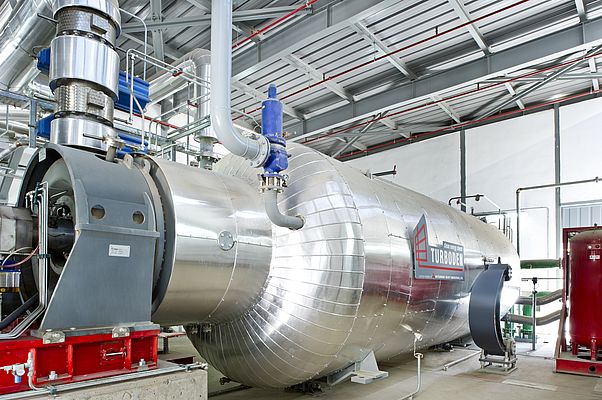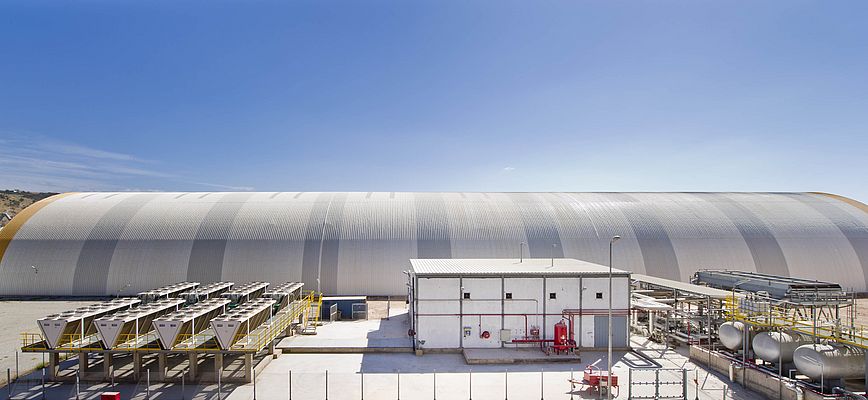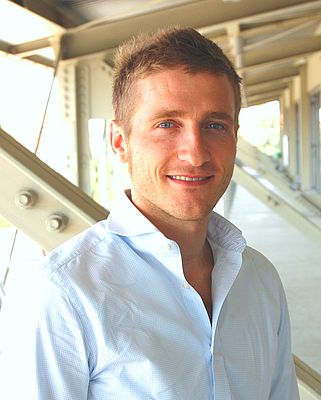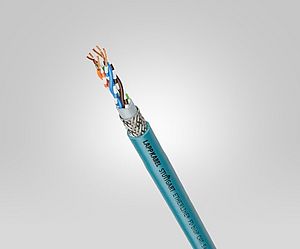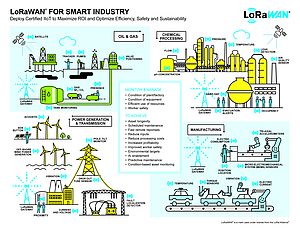Waste heat recovery systems are often seen as insufficiently attractive for energy intensive industries. Turboden thinks waste heat recovery could act as growth economic catalysts in the medium to long term, enabling industrial producers to improve their energy efficiency and eventually competitiveness, plant producers to expand their business and, at system level, to become more environmental friendly.
Major fields of application of waste heat recovery are the energy intensive industries that produce construction materials like cement, steel and other metals, glass and oil & gas. These industrial fields are typically key drivers of prosperous economic growths and they would benefit from policies and regulations promoting energy efficiency and conservation, eventually becoming more competitive, efficient and environmental friendly.
The ways to improve energy efficiency for energy intensive industries are various; some of the most promising opportunities for these industrial segments can leverage Organic Rankine Cycle (ORC) systems, a technology that allows to convert residual, low grade heat into electricity. The advantages of the ORC technology, which has the key feature of using organic compounds as working fluids instead of water, are:
- it is easy to operate (it's a completely automatic system with no requirement of additional personnel);
- its maintenance requirements are little;
- the impact on the primary process is negligible (the primary process is not affected in any case by the ORC system);
- it is flexible, being able to follow very variable thermal loads, e.g. suiting well also batch processes;
- it is reliable, approaching availability values in most cases greater than 98%;
- it is bankable, particularly in case referenced players (e.g. Turboden) are chosen as key equipment suppliers;
- it is as efficient as thermodynamically possible.
Here follow brief descriptions of ORC solutions as applicable in major industrial fields with case studies of Turboden ORC system employed in real projects.
Cement
Clinker (the element that makes up for more than 90% of cement) is produced through the calcination (a process that occurs at 1,500°C) of the raw meal (a mixture of minerals mainly made by limestone). As this process is endothermic, a significant amount of fuel (typically petcoke) must be supplied to make the reaction happening. A significant part of the combustion heat cannot be used in the production process and is lost to the environment, namely in the form of hot exhaust gas from the kiln and hot air used to quench the clinker.
Recovering the sensible heat contained in these gas streams and converting it to electricity is a way to achieve energy conservation and can improve specific energy requirement per ton of clinker produced by indicatively 5% (variable as related to specific project features). The ORC technology, for the key feature listed above, is one of the most attractive solutions to achieve this goal.
Real examples of Turboden ORC units employed in this field are:
- 2009, Italcementi plant of Aït Baha, Morocco 2 MW rated ORC unit recovering heat from kiln gas. This plant was hybridized in 2014 with a solar collector field boosting the electric production
- 2012, Holcim plant of Alesd, Romania 4 MW rated ORC unit recovering heat from kiln gas and AQC streams
- 2013, Holcim plant of Rohožník, Slovakia 5 MW rated ORC unit recovering heat from kiln gas and AQC streams
- Under construction, plant located in North America 8 MW rated ORC unit recovering heat from kiln gas and AQC streams
- Under construction, Heidelberg plant of Fieni, Dâmboviţa County, Romania 4 MW rated ORC unit recovering heat from kiln gas and AQC streams
Steel and other metals
In the steel (and other metals) production and processing industry, there are multiple waste heat sources where energy recovery with the ORC is possible. They can be divided into relatively "easy" sources (that are typically methane-fuelled and with a relatively low dust content) and relatively "complex" ones. Going deep into them would require extensive amount of time and it is not done here.
Instead, it is provided only a list of the processes in which waste heat recovery could be implemented, classified in few families:
- Heat recovery from re-heating furnaces: relatively clean exhaust gas at moderate temperature (in which the implementation of heat recovery system is relatively simple): Hot rolling; Forging; Annealing; Heat treatment and strip processing;
- Processes with large gaseous flows, either stable or cycling, with highly variable flows and temperatures and high dust loads (in which the implementation of heat recovery system is relatively complex): Sinter; Coke ovens; Blast furnace; BOF; EAF
Reference projects in this field are:
- 2012, Natsteel (part of Tata Steel) plant of Singapore, rolling mill application in a steel plant 0.6 MW rated ORC unit recovering heat from re-heating furnace coupled to a billets rolling mill. In this case a direct exchange ORC unit was employed
- 2013, ESF Elbe-Stahlwerke Feralpi plant of Riesa in Germany, EAF application in a steel plant 2.7 MW rated ORC unit recovering heat from EAF furnace. The ORC unit recovers heat from the primary heat source by means of a saturated steam loop. Part of the steam recovered is supplied to a neighbour company for heat-to-process use.
- Under construction, Ori Martin, plant of Brescia in Italy, EAF application in a steel plant 2 MW rated ORC unit recovering heat from EAF furnace. The ORC unit recovers heat from the primary heat source by means of a saturated steam loop. Part of the steam generated is supplied to the city district heating network.
- Under construction, Undisclosed customer, plant in Germany, scrap recycling kiln for an aluminum plant 2 MW rated ORC unit recovering heat from an aluminum scrap melting furnace. The ORC unit recovers heat from the primary heat source by means of a thermal oil loop.
Glass
Glass production is quite an energy intensive production process, demanding relevant amounts of chemical energy (coming from fossil fuels combustion) to melt the raw materials (mainly silica). These processes take place in dedicated ovens, with working temperatures typically exceeding 1,200 °C. The hot combustion gas therein produced, after having released heat to the melting process, leaves the oven toward air pre-heating regeneration exchangers, where it is further cooled down to temperatures ranging typically between 350 up to 500 °C depending upon the specific project features. At this stage waste heat recovery can take place.
Two main types of glass products can be distinguished: float glass(flat products) and container glass (e.g. bottles). These two glass products have different production processes, leading to different production capacities (much higher for the former) and operating temperatures: while float glass shows long and stable operations and relatively high temperature and clean exhaust gas, container glass has a more discontinuous production process and typically lower exhaust gas temperatures. Real examples of Turboden ORC units employed in this field are:
- 2012, AGC, plant of Cuneo in Italy, heat recovery from a float glass production process 1.3 MW rated ORC unit recovering heat from a 600 tpd float glass melting furnace.
- Under construction, Undisclosed customer, plant of Italy, heat recovery from a container glass production process 0.5 MW rated ORC unit recovering heat from two oxifuel container glass melting furnaces.
Oil & Gas
The Oil & Gas industry comprehends exploration, extraction, refining, transporting (often by tankers and pipelines), and marketing of petroleum and natural gas products. These processing activities offer potential fruitful opportunities to employ ORC based heat recovery systems, basically anywhere relevant amounts of heat (> 3 MWt) at medium to high temperatures (> 100 °C) are being wasted: just a couple of representative applications are here below briefly described.
- Flare Gas - Extraction:
Flare gas, or Associated petroleum gas (APG), is a kind of natural gas typically found associated with deposits of petroleum. Thanks to its characteristics of being a very flexible technology, ORC systems, coupled to flare gas streams via a gas burner and a thermal oil loop, are capable to exploit flare gas cycling availability to produce electricity and low temperature heat. - Gas compressor stations - Transport:
The movement of natural gas from producing fields to consumption regions requires an efficient and effective transportation system. To keep the natural gas moving at the desired rate, the compression stations must continuously "pump" the gas stream. This is accomplished with compressor stations located along the gas pipeline, with the compressor being most of the times directly moved by a gas turbine. The use of ORC units in these remote sites to recover the waste heat from gas turbine exhausts permits to recover between 25% and 35% of the gas turbine shaft power, leaving the gas compressor operator to its core business (not distracting important resource to operate the heat recovery cycle).
Reference projects in this field are:
- 2011, TransGas, compressor station in Canada 1 MW rated ORC unit recovering heat from one Solar Gas Turbine rated 3.5 MW (shaft power).
- Under Construction, Undisclosed Customer, oil field in Russia 2 MW rated ORC unit recovering heat from gas flaring. Hot water at ORC condenser used to warm up the oil extracted for pumping purposes.
Thanks to the multiannual experience in the field of waste heat recovery, a project supported by the European Commission under the framework of SILC-I initiative, has been launched in January 2014 and coordinated by Turboden. The WHAVES - Waste Heat Valorisation for More Sustainable Energy Intensive IndustrieS - project objectives and partners are available at the website www.whaves.eu
By Riccardo Vescovo, Turboden Srl, Italy



